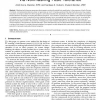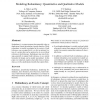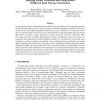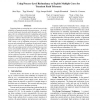33 search results - page 2 / 7 » Improving the Fault Tolerance of a Computer System with Spac... |
TSE
1998
13 years 4 months ago
1998
—Masking fault-tolerance guarantees that programs continually satisfy their specification in the presence of faults. By way of contrast, nonmasking fault-tolerance does not guara...
CF
2004
ACM
13 years 10 months ago
2004
ACM
This paper discusses fault-tolerant techniques for SRAM-based FPGAs. These techniques can be based on circuit level modifications, with obvious modifications in the programmable a...
AICCSA
2006
IEEE
13 years 11 months ago
2006
IEEE
Redundancy is a system property that generally refers to duplication of state information or system function. While redundancy is usually investigated in the context of fault tole...
DFT
2009
IEEE
13 years 12 months ago
2009
IEEE
Pre-fabrication design verification and post-fabrication chip testing are two important stages in the product realization process. These two stages consume a large part of resourc...
DSN
2007
IEEE
13 years 11 months ago
2007
IEEE
Transient faults are emerging as a critical concern in the reliability of general-purpose microprocessors. As architectural trends point towards multi-threaded multi-core designs,...




